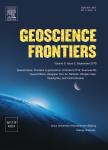Assessing the impact of conceptual mineral systems uncertainty on prospectivity predictions
Assessing the impact of conceptual mineral systems uncertainty on prospectivity predictions作者机构:Commonwealth Scientific and Industrial Research OrganisationMineral Resources Australian Resources Research CentreWA 6151Australia Mineral Exploration Cooperative Research CentreCentre for Exploration TargetingSchool of Earth SciencesThe University of Western AustraliaPerthWA 6009Australia ARC Centre for Data Analytics for Resources and Environments(DARE)Perth and SydneyAustralia University of SydneySchool of Mathematics and StatisticsSydneyAustralia Universitéde LorraineGeoRessourcesCNRS54000 NancyFrance The University of Western AustraliaDepartment of Mathematics and StatisticsPerthAustralia
出 版 物:《Geoscience Frontiers》 (地学前缘(英文版))
年 卷 期:2022年第13卷第6期
页 面:182-207页
核心收录:
学科分类:081801[工学-矿产普查与勘探] 08[工学] 0708[理学-地球物理学] 0818[工学-地质资源与地质工程]
基 金:the financial support of the ARC ITTC DARE Centre IC190100031 (ML, MJ, RS, EC) the ARC DECRA scheme DE190100431 (ML) ARC Linkage Loop3D LP170100985 (ML, MJ, GP, JG) MRIWA Project M0557 (NP, MJ) MinEx CRC (ML, MJ, JG, GP) support from European Union’s Horizon 2020 research and innovation programme under the Marie Sklodowska-Curie grant agreement No. 101032994 supported by the Mineral Exploration Cooperative Research Centre whose activities are funded by the Australian Government’s Cooperative Research Centre Program
主 题:Uncertainty Modelling Prospectivity Economic geology Geological plausibility Forest-based classification
摘 要:The past two decades have seen a rapid adoption of artificial intelligence methods applied to mineral exploration. More recently, the easier acquisition of some types of data has inspired a broad literature that has examined many machine learning and modelling techniques that combine exploration criteria,or ’features’, to generate predictions for mineral prospectivity. Central to the design of prospectivity models is a ’mineral system’, a conceptual model describing the key geological elements that control the timing and location of economic mineralisation. The mineral systems model defines what constitutes a training set, which features represent geological evidence of mineralisation, how features are engineered and what modelling methods are used. Mineral systems are knowledge-driven conceptual models, thus all parameter choices are subject to human biases and opinion so alternative models are ***, the effect of alternative mineral systems models on prospectivity is rarely compared despite the potential to heavily influence final predictions. In this study, we focus on the effect of conceptual uncertainty on Fe ore prospectivity models in the Hamersley region, Western Australia. Four important considerations are tested.(1) Five different supergene and hypogene conceptual mineral systems models guide the inputs for five forest-based classification prospectivity models model.(2) To represent conceptual uncertainty, the predictions are then combined for prospectivity model comparison.(3)Representation of three-dimensional objects as two-dimensional features are tested to address commonly ignored thickness of geological units.(4) The training dataset is composed of known economic mineralisation sites(deposits) as ’positive’ examples, and exploration drilling data providing ’negative’sampling locations. Each of the spatial predictions are assessed using independent performance metrics common to AI-based classification methods and subjected to geological pl



